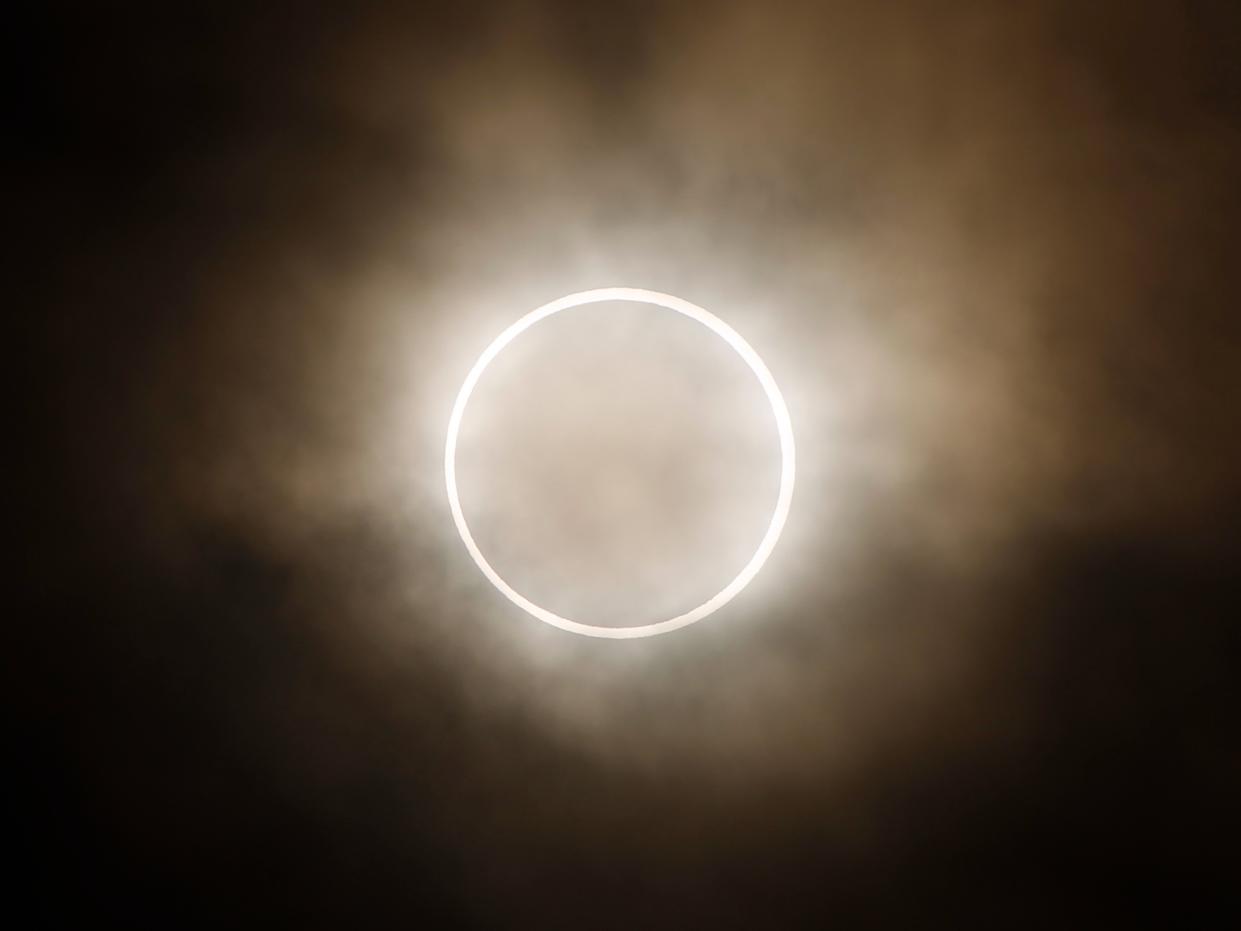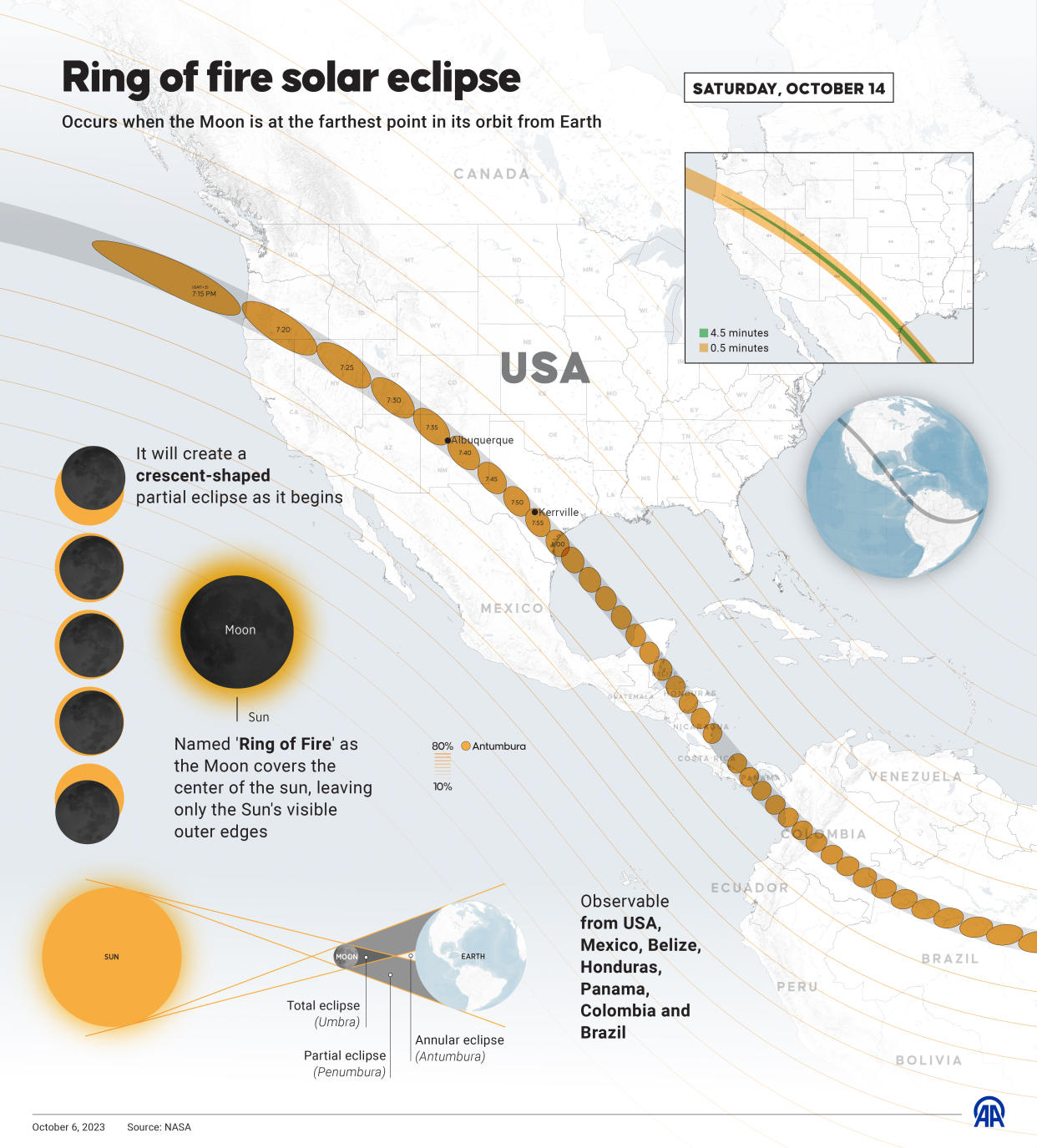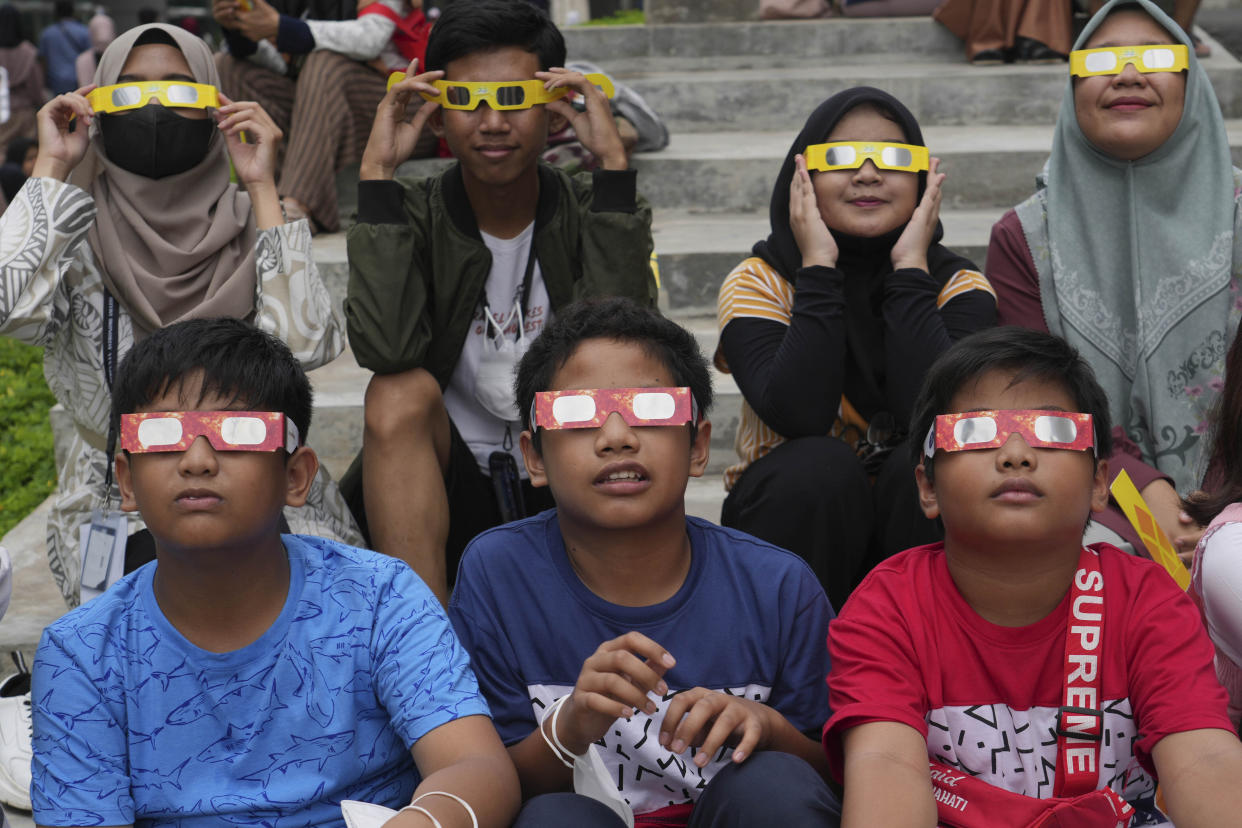How to watch the 'ring of fire' solar eclipse this weekend
Sky-gazers in the western half of North, Central and South America will be treated on Saturday to a spectacular annular solar eclipse that will create a “ring of fire” in the sky — for those lucky enough to see it.
What is an annular eclipse?
The phenomenon happens when the moon is ever so slightly further in its orbit from earth, so it doesn’t totally cover the sun when they cross paths and instead leaves the edges of the sun — or “ring of fire” — visible.

The “ring of fire” will last between one and five minutes for most places, according to NASA. The sky will grow dimmer, though not as dark as during a total solar eclipse, the air may feel cooler, and some animals may begin to behave as if it is dusk.
“It is like nothing you’ve ever experienced before,” Mitzi Adams, assistant chief of the Heliophysics and Planetary Science Branch at NASA’s Marshall Space Flight Center, said in a statement. “It’s sort of like somebody puts a bowl on top of Earth right above where you’re standing. In the middle of the day, it gets darker, but you can still see light around the rim.”
When will it be visible?

Starting around 8 a.m. PT, the moon will pass directly in front of the sun, casting a shadow over the Pacific Northwest. The shadow will then move south through California, Texas, Utah and Nevada over the next three hours, and then into Central and South America.
The last annular eclipse occurred in 2017, and according to NASA, the next one won’t appear over this part of the world again until 2046.
Recommended reading
• NBC News:Rare 'ring of fire' solar eclipse will cross the U.S. on Saturday: Here's how to see it
• USA Today: 'A cosmic masterpiece': Why spectacular sights of eclipses never fail to dazzle the public
• CNN:How to watch the 'ring of fire' eclipse
But even if you don’t live in the direct path of the “ring of fire,” you’ll still be able to see at least a partial solar eclipse from just about everywhere in the continental United States. (If you’re on the East coast, there will be another total solar eclipse next April.)
NASA will also host a livestream of the eclipse beginning at 11:30 a.m. ET on Saturday, sharing views from Albuquerque, White Sands, N.M., and Kerrville, Texas.
What do I need to view it?

It is never safe to look directly at an eclipse without specialized eye protection designed for solar viewing, so you should still wear protective eyewear, or view it through a pinhole projection box you can make with items you probably already have at home. See these safety guidelines for viewing solar eclipses.
And when in doubt, remember: Never look directly at the sun.

